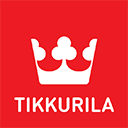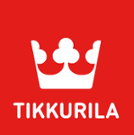
Which coatings can be used on green building sites? There is no simple answer, as there are numerous environmental certificates and emission classifications. The most commonly used classifications – LEED, BREEAM, and RTS – all have their own criteria for scoring the products used.
See below to find out more about classifications and concepts related to eco-friendly construction.
LEED (Leadership in Energy and Environmental Design)
Developed in the United States in 1998, LEED is the world’s most widely used green building certification system. The LEED certificate is granted to buildings that meet the minimum requirements set by the U.S. Green Building Council.
LEED has minimum requirements for emissions and VOC content (g/l) for paints and coatings.
Note regarding coatings: Look for products with minimal VOC content and emissions.
BREEAM (Building Research Establishment’s Environmental Assessment Method)
Developed in the United Kingdom, BREEAM has been in use since 1990. Originally developed for European conditions, this classification system for eco-friendly properties guides the planning, construction, and use of buildings.
BREEAM projects always involve an assessor responsible for handling documentation and counting score. For paints and coatings, the objective is to score points for the project by choosing products that have minimal emissions and VOC content.
Note regarding coatings: Look for products with the M1 emission classification and low VOC content.
RTS environmental classification
The Finnish RTS classification was especially designed for Finnish conditions. It consists of the RT project tool and the RTS environmental classification certificate. Documentation takes place in the project tool, which contains all criteria and indicators used to guide the progress of a construction project.
The system takes Finnish regulations and any special characteristics of the building stock into consideration; it is based on European standards (CEN TC 350) and common Finnish industry practices.
Note regarding coatings: Look for products with the M1 emission classification.
VOCs (volatile organic compounds)
VOC emissions contribute to ozone in the lower atmosphere and in large concentrations adversely affect people, animals, and plants. One of the aims of green building is to minimize VOC emissions, which is also taken into account in legislation.
Note about coatings: Look for products with minimal VOC content.
Construction material classification M1
The M1 classification indicates how much of the compounds used in interior construction materials, such as coatings, emit into indoor air. There are three classifications:
- M1: Materials with very low emissions.
- M2: Materials with low emissions.
- M3: Untested materials or materials that do not meet the emission limits of the classification.
The M1 classification has limit values for certain volatile compounds, as well as criteria for sensory perception. The M1 classification is granted by the Building Information Group.
Note about coatings: Look for products with the M1 emission classification.
The Nordic Swan Ecolabel
Only 20–30% of products in a certain product group can be granted the Nordic Ecolabel. Coatings with the label meet demanding environmental and quality requirements that consider the whole lifecycle of a product from manufacture to disposal.
The Nordic Swan Ecolabel is only granted to products that are among the best in their category in terms of the environment.
Note about coatings: Look for products with the Nordic Swan Ecolabel.
Allergiatunnus
The Allergiatunnus label is granted to products that are unscented and have no other irritants or sensitizing agents. The products also need to meet stringent product-specific criteria.
Note about coatings: Look for products with the Allergiatunnus label.
The EU Ecolabel
The European environmental label, the EU Ecolabel, indicates that a product or service is eco-friendly. The system has been developed together with leading environmental organizations and consumer groups, and the label is granted by a neutral third party.
Note about coatings: Look for products with the EU Ecolabel.
CE markings
The CE marking indicates that a product meets the requirements set by the European Union on safety, health, the environment, and consumer protection. The Construction Products Regulation (CPR), in force since July 1st, 2013, made CE marking mandatory for construction products that fall within the scope of a harmonized product standard.
Note about coatings: For the majority of coatings and paint products, there are no harmonized standards that would require CE marking. This is why many Tikkurila paint products do not carry this marking.
The Key Flag
The Key Flag can be granted to any product manufactured in Finland. The domestic content of a product is calculated, taking into account factors such as raw materials, packaging, marketing costs, and funding. Most of Tikkurila’s broad selection of products have been granted the Key Flag label.
Note about coatings: Look for products with the Key Flag.
Looking for a responsible partner for your green building site? Get in touch! We’re happy to help you with everything related to coatings and paints.


